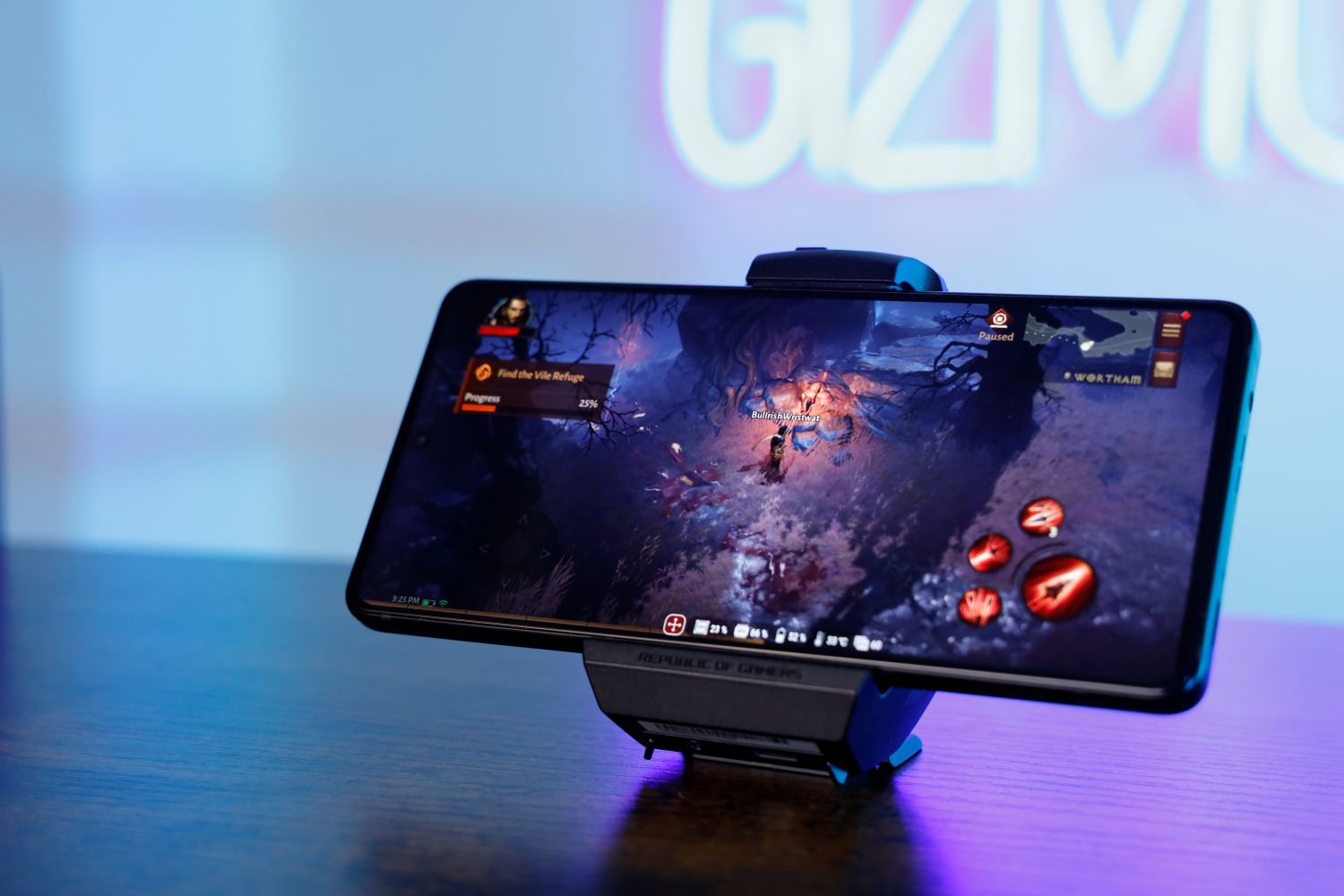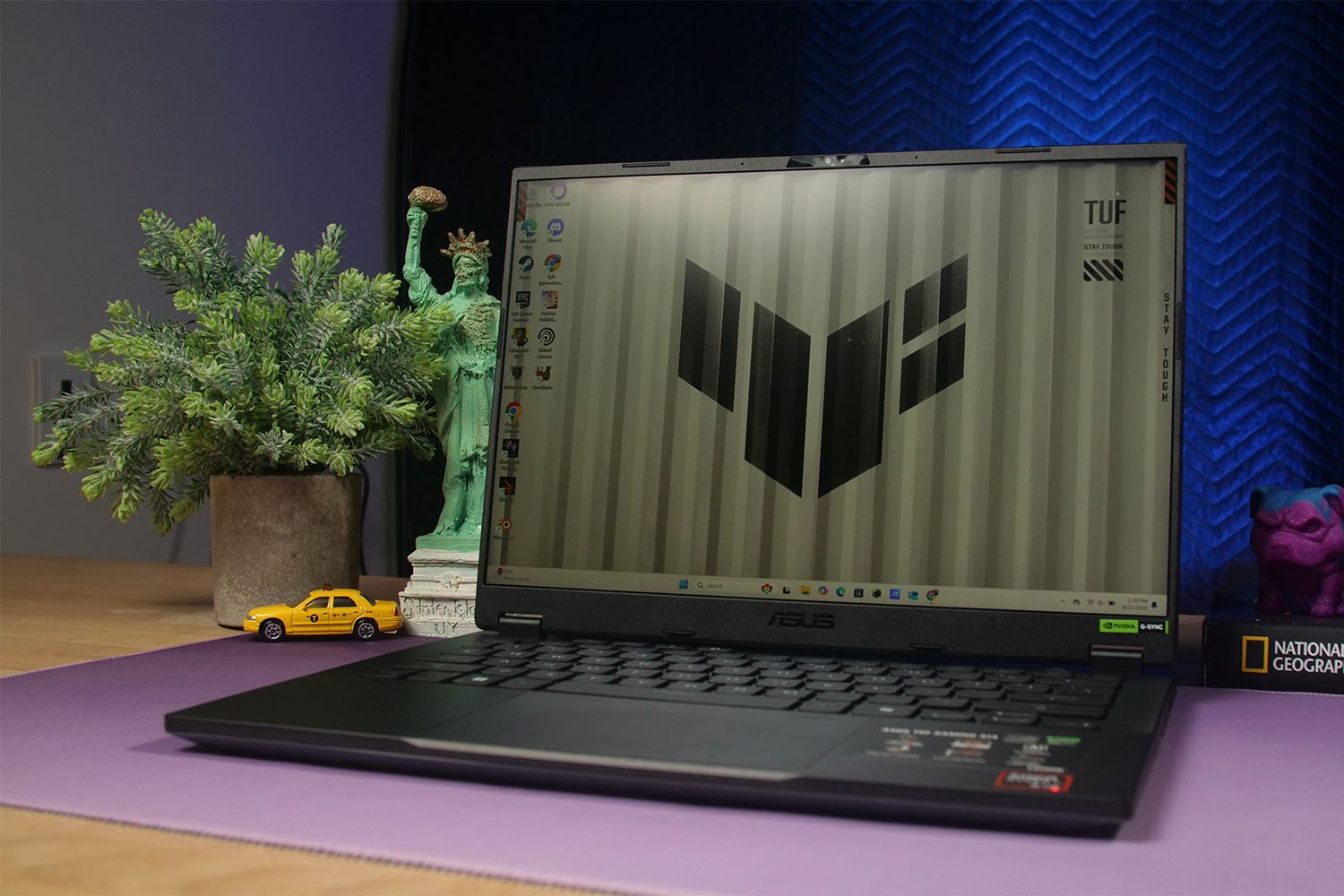If I had to get an Android phone and had no qualms about the money I’d spend, I would look first at the $1,000 Asus ROG Phone 9, set to launch in January. It’s not just the performance or the multi-textured glass back with embedded LEDs and the touch-sensitive “Air Triggers.” It’s all that combined. It’s excessive but in all the right ways.
The device packs so many extra gaming features that it seems like the phone that could make any would-be mobile gamer giddy. But having it in hand, I can’t recommend it to anyone, not when its poor audio quality sounds like a phone that costs less than half the ROG Phone 9’s asking price, but hey, at least this phone still has a headphone jack for when you can’t stand its poor speakers anymore.
Asus ROG Phone 9
The ROG Phone 9 has excellent performance and a standout battery life, but it doesn't have the sound quality or display resolution to match other $1,000 phones.
Pros
- Excellent performance with overclocking X Mode on new chip
- Battery life that can survive hours of gaming and still have some juice left over
- AeroActive Cooler X slots in nicely and doesn't drain too much battery
Cons
- Awful sound quality
- Display looks alright, but too low resolution for its price
- Many AI features are game-specific
I also have to mention that the ROG Phone 9 doesn’t come with the expanded “Anime” LED lights that you get with the $1,200 ROG Phone 9 Pro. This allows you to play a few arcade games or run GIFs from the back of the phone. While that sounds fun and pointless in equal measures, the base ROG Phone 9 is essentially the same device.
I also need to say upfront that I did not get to use last year’s ROG Phone 8, but Asus itself noted some of the complaints users had about the previous year’s gamer phone. Players complained about the placement and specs of its speakers and the lack of dedicated amps. Fans felt miffed about the meager promised two years of software updates.
On that front, absolutely nothing has changed. The phone only offers two years of software and five of security updates. The Google Pixel 9 offers seven years of OS and security updates. The sound on the ROG phone can’t hold a candle to other $1,000+ phones like the iPhone 16 Pro or the Samsung Galaxy S24 Ultra. The sound is tinny and thin. Even worse, it’s easy to block the speakers with your palm. This is the kind of phone that needs headphones. There’s no way you can get around the fact your phone will be locked out of new software updates after just two years.
The phone’s performance has been boosted with the new Qualcomm Snapdragon 8 Elite chip, which Asus puts into nitro-fueled overdrive with on-board overclocking. Yes, this phone can get hot even with its solid thermal systems. You haven’t lived the gamer phone lifestyle until you’ve strapped a massive external cooler unit to the back of your device, feeling like a doctor desperately trying to help a fever-sick patient achieve homeostasis.
Now that today’s phones feature chips that can rival some low-end PCs, the need for PC-level cooling feels all the more necessary. The ROG Phone 9 doesn’t draw as much power as expected. The battery life on the ROG Phone 9 is still up there, and it has the best phones available. I could use it for a full day, even after a morning spent gaming.
Asus ROG Phone 9 Review: Build Quality and Audio
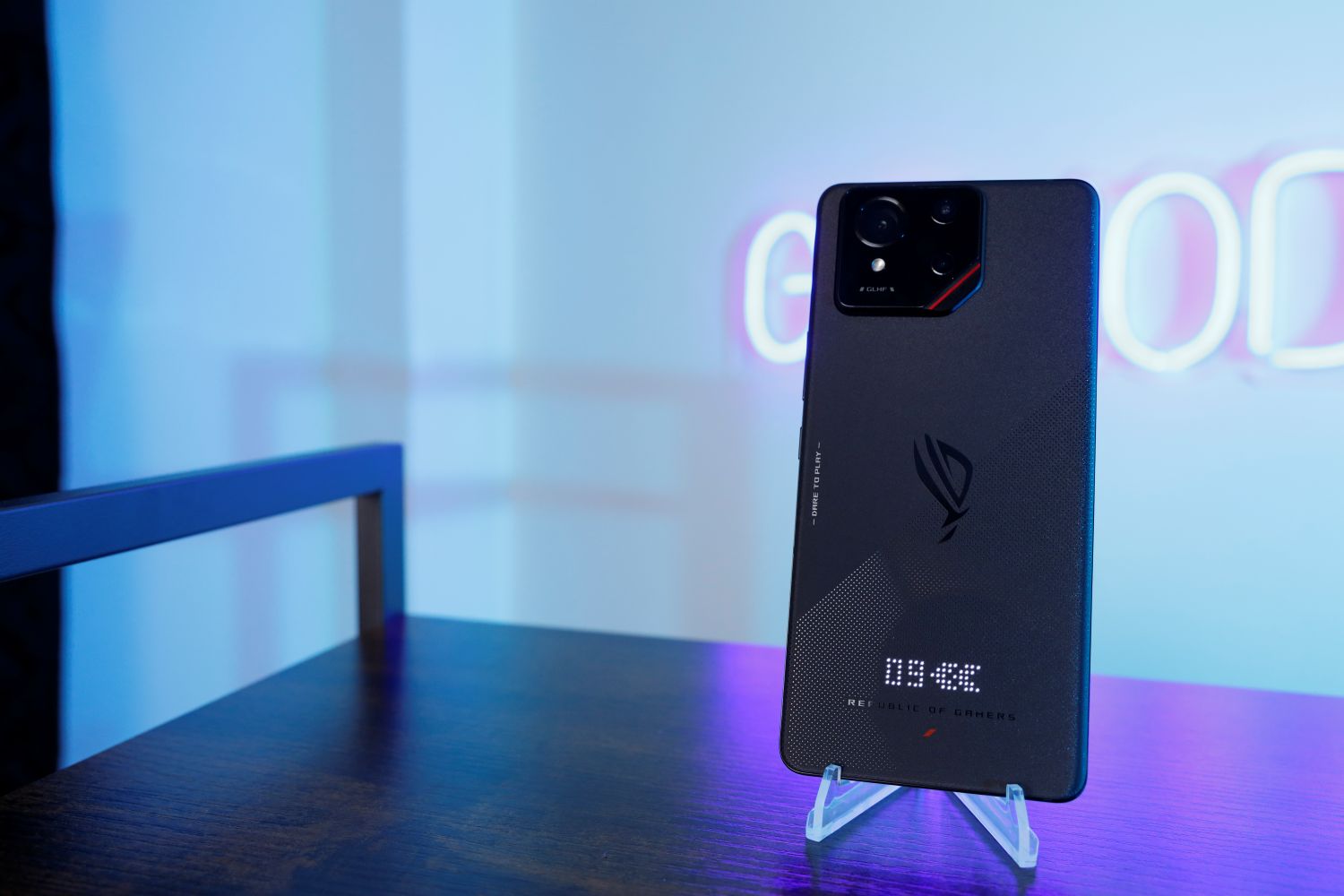
Asus’ latest gamer phone isn’t a huge revolution from the ROG Phone 8 Pro. The Non-pro Phone 9 has a shrunken display at the phone’s bottom rear. You can set this section to show the time and battery or show an alert if somebody’s calling you. I don’t know how many people set their phone screen-side down on their desks, but it could occasionally be handy. It’s as much of a novelty as Nothing’s devices with rear LED lights, but those devices sell well enough for the company to keep making them.
At the very least, this is a nice phone to hold. The sloped sides give the ROG Phone 9 a more old-school Android quality than the latest Google Pixel 9 phones. Compared to your usual iPhone, Asus’ glass back and its range of textures all help remind you of the phone you hold in your hand, though inevitably, you’ll need to find a very specific case that won’t cover up all the bottom LEDs.
The redesigned AeroActive Cooler X Pro is a standout accessory, though it may cost you $120 extra. It slots directly into the middle of the phone without covering up any speakers and still offers access to the power button. You’ll definitely hear it going off, but it’s not so loud it will distract you from the in-game audio. The cooler adds two extra triggers that, combined with the AirTriggers (which you manually turn on in Asus Armoury Crate), act as pseudo-R2 and L2 buttons.
You can use the built-in Armoury Crate software to download game-specific control profiles. You can use the triggers for a game like Diablo Immortal to pick up items or bring up the map. This works relatively well; you get force feedback and on-screen signals when using either AirTrigger.
Unfortunately, that audio is nowhere near where you may want it for such an expensive phone. It’s somewhere between tinny and shallow, even if it can get loud. I compared it side-by-side with an iPhone 16 Pro and a Pixel 9 Pro, and Asus’ device was not anything I would listen to by itself.
And it seems a pair of headphones is exactly where Asus wants you to go. The company promoted the use of Dirac Virtuo for spatial sound in headphones. The company claims its AeroCase and ChillCase redirect sound from the bottom speaker to the front, but I don’t have either. The AeroActive Cooler X Pro is supposed to integrate a loudspeaker, which Asus says is equivalent to a subwoofer, to enhance bass performance. I didn’t sense the audio was better with the cooler attached.
Asus ROG Phone 9 Review: Display
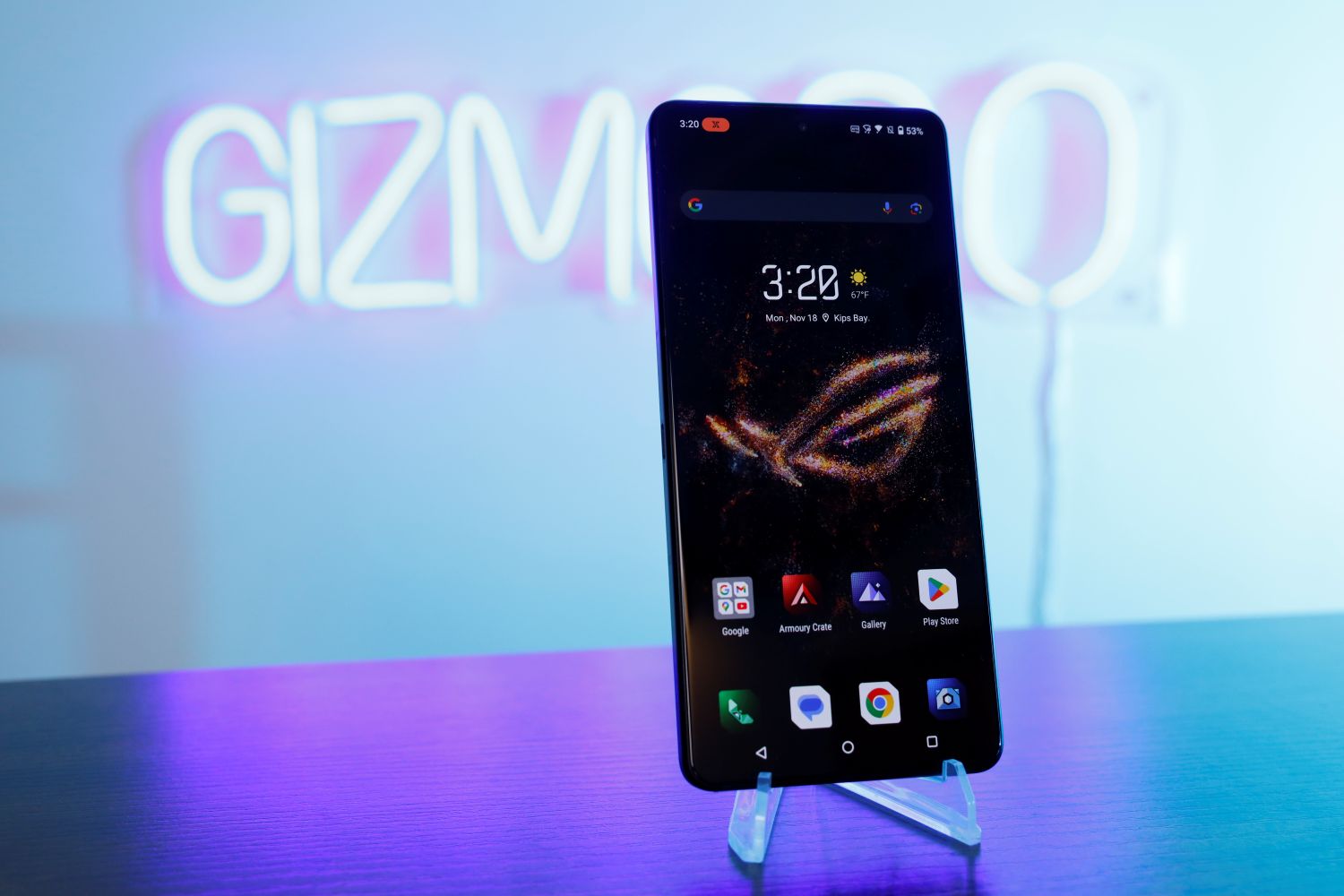
If you’re paying this much for a phone, you’d want a display that can hit the high framerates promised by its new CPU. The ROG Phone 9 includes the same 6.78-inch AMOLED display as the Phone 8 Pro with a dynamic refresh rate between 1 and 120 Hz. The only way to get the fabled 185 Hz is by enabling it while in a game through the Game Genie UI. If the game even supports such high frame rates, that matters.
The ROG Phone supports a very bright screen, so much so that I could play Genshin Impact under direct sunlight with practically no issue. I was overall satisfied with the colors on the screen, though I also have to point out that this isn’t packing the highest resolution screen. It’s an FHD, 2400 by 1080 resolution display. The Samsung Galaxy S24 Ultra is packing a 1440 by 3120 display. A Pixel 9 Pro XL is 1344 by 2992.
Asus ROG Phone 9 Review: Performance

If the ROG Phone 9 is doing anything, it’s spelling out good tidings for 2025’s premiere Android devices from the likes of Samsung and more. The Qualcomm Snapdragon 8 Elite results in some of the best mobile performance we’ve seen. It’s been great in benchmarking, and in-game performance is equally impressive, managing to beat Apple’s latest. It’s good enough that we may finally understand why Qualcomm abandoned its mobile chips’ “Gen 3” monikers and called it “Elite.”
Along with the new chip, my version of the Phone 9 included 16 GB of RAM and 512 GB of storage, but if you opt for the “Pro Edition” version, you’ll get 32 GB of LPDDR5x memory. They both support an overclocked “X Mode” that boosts CPU and GPU performance (one of the reasons Asus suggests you use the external cooler).’
Benchmarks were the most impressive part of the ROG Phone 9, especially running on the overclocking X Mode. In Geekbench 6, I saw CPU scores of more than 200 points more in single-core settings and 1,200 points more in multi-core settings than the iPhone 16 Pro. If you want something more apples to apples, the Samsung Galaxy S24 Ultra with the Snapdragon 8 Gen 3 chip scored 800 points worse in single-core and 2,700 points better in multi-core under the overclocked mode.
In 3D Mark tests like Steel Nomade Lite, the ROG Phone 9 outperformed an iPhone 16 Pro by 488 points. It’s 661 points better under the same test. This is all without thermal throttling, thanks to the external cooling unit. If I turn off X Mode and run it under “Dynamic” CPU settings with a stated 1.02 GHz clock speed, the phone hits below Apple’s A18 Pro chip. You’ll want to put it into X-Mode whenever you get into a game and be rewarded with some strong performance.
The phone can easily hit the 60 FPS cap in a game like Diablo Immortal. Playing Call of Duty Warzone: Mobile with all settings set to high, I got just under 60 FPS regularly without hitting any thermal throttling and below 40 degrees Celsius without using the external cooler.
The new 185 Hz refresh rates won’t come into play unless you find a game without any framerate caps and graphics that will let the ROG Phone 9 hit those peaks. Games like Dead Cells can get up to the fabled 160 FPS and feel much smoother than you might feel on phones typically, but it doesn’t really change the experience than if you were using it at 60 FPS. The real reason you want high refresh rates is for competitive games.
Even when I lower graphical settings in a game like Warzone to maximize FPS, I can get anywhere near high enough for above 120 Hz refresh rates to matter. That being said, it’s still a unique feature for the phone that could make a difference to those sensitive to buttery smooth gameplay.
Asus ROG Phone 9 Review: Software
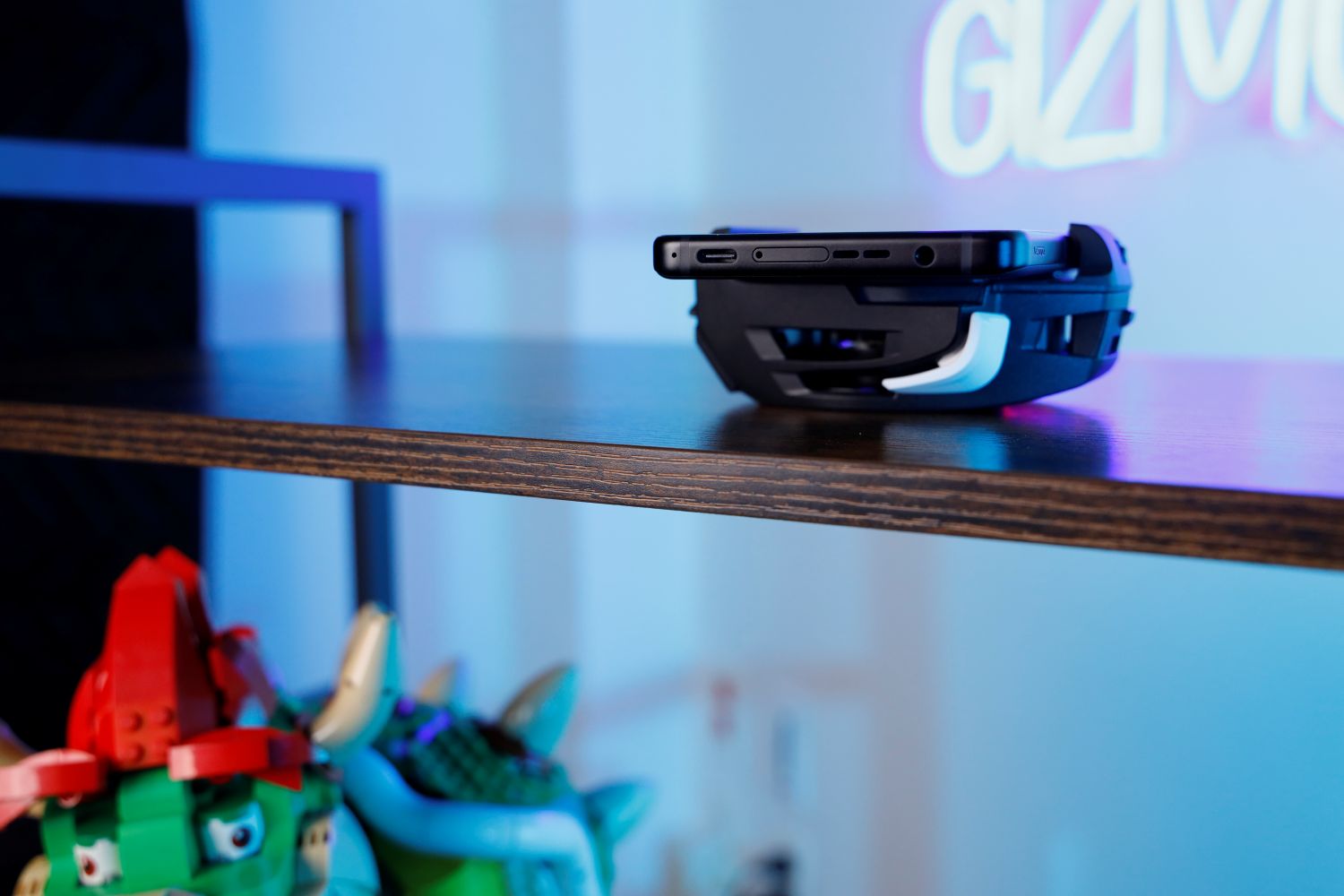
I need to take a moment to discuss all the little extra software touches specific to the ROG Phone, some of which work well, while others don’t. Armoury Crate is surprisingly useful, not just for setting your performance settings but also for modifying the AirTriggers presets. It’s easy to use and reminds you of the remaining battery life.
I also found Game Genie, which you access by swiping off the top left corner of the screen, to be fast and responsive. It’s the only way to activate the AirTriggers in-game or show real-time FPS or temperature data, so it’s nice that it works so well right out of the box.
There’s so much extra packed into the phone that you’ll eventually find something less than useful. The ROG Phone 9 doesn’t go to sleep by default. It enters a “Lock touch” mode to darken the screen and keep the game running in the background. You exit the mode by swiping two fingers, but the phone never seems to recognize the gesture.
While every other device maker is promoting AI as the future, even if it’s one we don’t want, Asus has instead used AI to automate tedious in-game tasks. Unfortunately, as it currently stands, most of these features only work with Genshin Impact or Honkai: Star Rail. Some of these features let you automatically pick up objects on the ground or “speed up conversations.” To say that they’re useless would be missing the mark. Asus knows what variety of gamers have an edge toward the ROG Phone, but it’s still missing out on people like me, who have absolutely no interest in a game where a standout feature is blowing past half the content.
Asus ROG Phone 9 Review: Battery Life
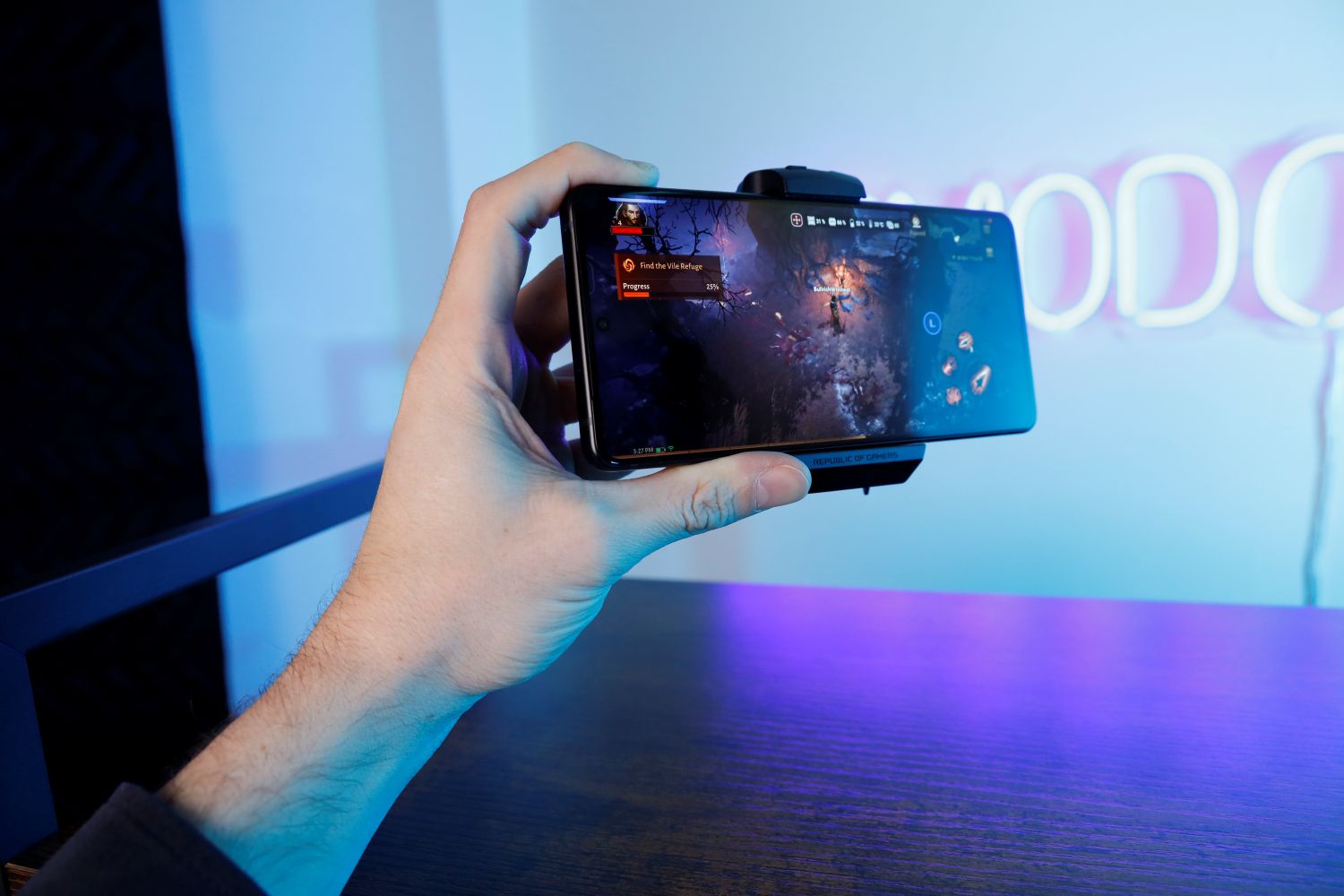
ROG phones usually boast some of the largest batteries on any mobile device. The latest from Asus contains a 5800mAh battery capacity (more than the 5500mAh from the ROG Phone 8 Pro), but a lot of software works on the back end to keep things going even in-game.
Even with the cooler unit installed and running continuously for hours, then dipping in and out of several games over a full workday, I only reached 50% battery after four hours. That’s pretty spectacular, though, while running on the Dynamic settings to keep up battery life in off periods.
Running the phone on X Mode saps the battery much faster, even more so if you’re using the external cooler. Still, after nearly an hour of constant gaming one morning, I was only down to 70%. The battery is already big, but the background software is doing the work to take you out of X Mode when not in-game. If there’s any other reason to get the ROG Phone 9 beyond other devices on the market, it’s battery, maybe it’s it.
Asus ROG Phone 9 Review: Camera
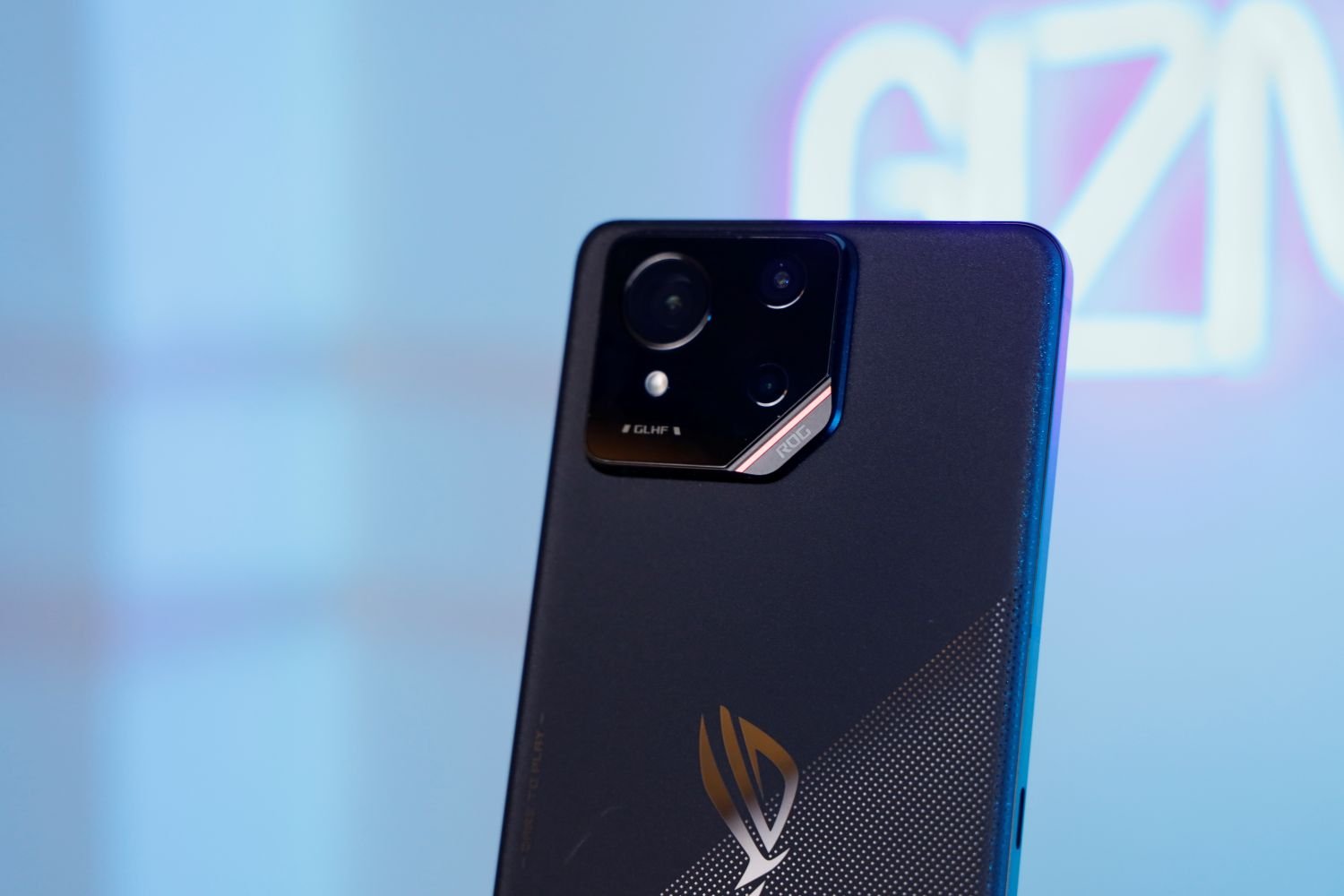
Asus opted for Sony’s Lytia 700 main camera compared to last year’s IMX890. The ROG Phone 9 packs a 50 MP, 1/1.56-inch main lens alongside a .7x 13 MP ultra-wide and a 5 MP Macro lens. Only the Pro version gets the 32 MP 3x telephoto, but the big innovation this year is the 6-axis gimbal system that is supposed to make photos and videos on the go look that much better.


Left: ROG Phone 9; Right: iPhone 16 Pro
I wasn’t able to test that stabilization outside, just walking around with video, so I didn’t see anything truly unique compared to other high-end phones on the market. The two other standout camera features are the “Portrait Video”, which keeps a subject framed for a cinematic look, and “AI Panning” which can create a speed effect while keeping a moving subject in frame.


Left: iPhone 16 Pro; Right: ROG Phone 9
Those are nice distractions, but the actual photos it can take are good but not exceptional. I compared it directly with an iPhone 16 Pro (which tends to shoot warm), and while they were good and detailed enough for casual shooting, I found the ROG Phone 9’s camera can result in some haloing in direct light and nighttime shots can look especially bad.
Asus ROG Phone 9 Review: Verdict

Asus is still confusing customers with the ROG Phone 9 Pro and ROG Phone 9 Pro Edition, the latter having better RAM and comes with the cooling unit in the box. However, as it stands, the Pro edition truly takes gamer phones over the top. It includes a new “Anime” lighting setup with 648 LEDs compared to the ROG 8 Pro’s 341 and ROG Phone 9’s 85. This should allow you to upload custom GIFs and even play four arcade-style games. Yes, the Pro is a gamer phone with games you can play on the front and back of it.
Compared to that, the regular ROG Phone 9 may initially seem like a forgotten stepchild. However, if you really don’t care for fancy LEDs, this is the better phone to buy for its price. It’s missing out on 1 TB of storage, but 512 GB is good enough for most mobile games unless you want to turn yours into an emulation station (in which case, you may be better off with a mini PC or a solid gaming handheld).
The performance is so solid that I want to give it a better score, but the lingering issues hold it back. This phone has no right to sound as bad as it does at this price. The camera is only so-so, and the lack of long-term promised software updates makes it a hard sell for anybody who cares about keeping devices out of the junk heap.
It’s a solid performer, and I’m excited to see the future of Android with Qualcomm chips. If you simply want the best-performing Android phone, this is the best on the market. Just know you’ll need to use headphones to get the best audio and also cut out the whirring fan jutting from your device’s back end.
